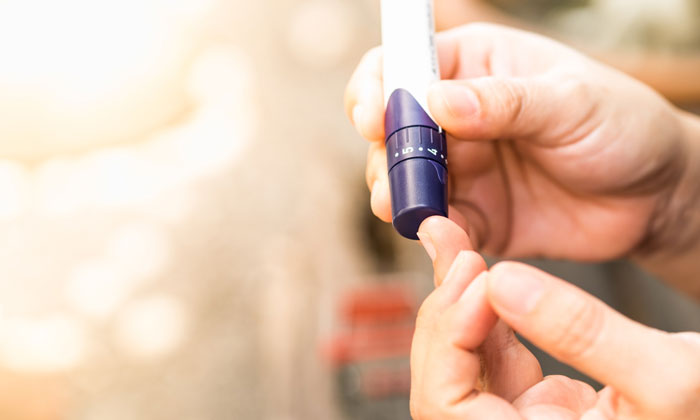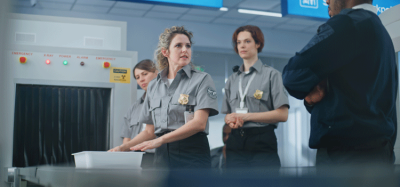Diabetes and air travel: Ensuring security, promoting dignity
Posted: 10 February 2017 | Katie McGhee | Child Health Nursing Lecturer | School of Health Sciences | UEA | 5 comments
People with Type 1 Diabetes often have difficulty when moving through an airport and while security is clearly essential, often certain passengers experience mistreatment…


Following International Airport Review‘s coverage in October 2016 of the problems faced by one passenger and an open letter written by Rachel Humphrey to Dubai Airport following the mistreatment by security screening staff of her son who has Type 1 Diabetes, we investigate further by asking Katie McGhee, Child Health Nursing Lecturer at the School of Health Sciences, University East Anglia to give us a healthcare professional’s insight into the issues faced by people with Type 1 Diabetes when travelling by air.
Purpose of Review
This review provides a professional response to Rachel Humphrey’s open letter to Dubai International Airport: Held in an airport for 2 hours because my son had an insulin pump (International Airport Review 2016). The focus of this article pertains to the health and wellbeing needs of people with Type 1 diabetes and insulin pump therapy, travelling through airport security worldwide.
Type 1 Diabetes and Risks
There are almost 3.5 million people in the UK* living with diabetes, commonly classified into two principal types; Type 1 and 2 (Holman et al 2015). Type 1 diabetes (T1D) is a serious long term condition, resulting from a person’s auto-immune system destroying the insulin producing beta cells in the pancreas. Insulin is crucial to life and deficiency results in an increase in levels of glucose in the blood stream, causing a range of short and long term health consequences if not controlled.
Join us live: Shaping the Next Generation of Hold Baggage and Air Cargo Screening
Join us live for an insightful webinar on 11th December at 14:00 GMT, in collaboration with Smiths Detection, as we explore the strategic balance of operational efficiency, regulatory compliance, and sustainability in high-volume security environments.
This session offers a focused look into future-proofing your security strategy.
Key learning points
- Cost Reduction: Strategies to minimize bag travel time while simultaneously reducing operational costs.
- Regulatory Roadmap: Insights into the next wave of regulatory changes and their impact on future investment decisions.
- Sustainable Systems: Practical approaches to building sustainability into security systems and lowering the total cost of ownership (TCO).
- Scalable Solutions: Real-world examples of scalable systems supporting current airport growth and preparing for tomorrow.
Register now for expert insights, case studies, and actionable strategies on operational efficiency!
There are almost 3.5 million people in the UK* living with diabetes…
This can range from impaired concentration, fatigue, weight loss and dehydration to hospitalisation with serious Illness, notably the life-threatening condition Diabetic Ketoacidosis as well as long-term consequences potentially resulting in blindness, renal failure, nerve damage and cardiovascular disease such as stroke, heart attack and amputation (JDRF 2016).
Prevalence and Technology
T1D currently affects 400,000 people in the UK* with over 29,000 of them children. Throughout the world the incidence of T1D is increasing with a distinct trend in very young children with an annual increase of 4% in children under five years of age (Wilson 2008) and remarkably a five-fold increase observed in this age group in the last twenty years (JDRF 2016). Notably young people in England having one of the highest incidences of T1D in Europe, affecting 97% of all children with Diabetes (JDRF 2016, Holman et al 2015, Kime 2014).
Advances in treatment technology and diabetes healthcare have meant that insulin pump therapy (IPT) is now being used more frequently to minimise the very serious short- and long-term complications of inadequate diabetes control. IPT has gained widespread acceptance as an effective and safe means of insulin delivery in the UK in the last decade and there is a national drive to widen its uptake to match that of other western nations (Hammond 2013). IPT reduces risk of both acute and long-term diabetes complications and prolongs life expectancy, compared with non-pump users.
IPT involves the continuous delivery of insulin from a pump through a thin tube placed under the skin, usually in the lower abdomen. The pump allows flexibility, in that the user can easily administer insulin as and when required, without the burden of insulin injections, for example during changes to eating patterns or at times of stress or increased activity. IPT ultimately helps people to manage their diabetes effectively by matching their insulin to their needs, keeping their blood glucose levels under control.
Airport Travel and Technology
Vacation travel is a welcome retreat from our everyday lives with approximately 175,000 passengers per year travelling via the eleven principle UK airports**. Almost 30,000 (18%) of these are children, young people and young adults ranging from 2 – 24 years of age (CAA 2015).
Healthcare professionals play an important role in educating people and their families with practical information and tips for successful travel with their “constant companion”; the IPT (MacNeill and Fredericks 2015). IPT users can be enabled to enjoy any type of vacation travel with pre travel planning in partnership with their healthcare provider in relation to important issues including blood sugar control, doctors’ letters, medication lists, pump supplies, loaner pumps, insurance, airport security and the flight itself.
Airport security is increasingly remarked upon as a barrier, causing the person with IPT and their family the most negative experience of airport travel than any other means (MacNeill and Fredericks 2015, Morrison and Weston 2012). Unfortunately it has become increasingly evident that not all airport security staff are familiar with IPT, a situation that is compounded by language barriers in some international destination airports. The risk of increased stress for people with IPT at airport security and the potential for a subsequent life-threatening emergency requires urgent airport authority attention. Rachel Humphrey’s alarming experience with her 14 year old son at Dubai Airport in June 2016 (International Airport Review 2016) highlights the necessity for airport authorities to understand the risks to the individual having to remove their insulin pump to undergo x-ray, and/or themselves being subjected to an x-ray whilst wearing the pump and to ensure that all staff are trained accordingly.
The controversial subject of how IPT users should negotiate airport security checks is an uncertain arena, provoking heightened levels of anxiety, stress and distress for people with IPT and their families. Confusion relates to the differing security measures employed throughout the world; the conflicting recommendations by the pump companies and the reported experiences by frequent travellers. Problems encountered include requests to remove pumps for closer inspection or an insistence that the pump is x-rayed (Morrison and Weston 2012).
Some children and young people with T1D sadly report feelings of insecurity, fear, prejudice, rejection, and shame…
There is debate as to whether the traveller should detach the pump and visually show it to airport security personnel or wait to be questioned should they alarm as they pass through the metal detectors. There is however certainty that IPT should not be exposed to total body scanners (Advanced Imaging Technology) nor to x-rays as they have the potential to damage the electronic parts of the pump and cause malfunction (MacNeill and Fredericks 2015, Morrison and Weston 2012). It is becoming increasingly popular for IPT users to ask for a ‘physical search’ (manual pat down) as airport security measures become ever more stringent. However, many travellers reject ‘pat downs’ as well, claiming they are too intrusive (Levinson 2011).
Going Forward
Maintaining the dignity of people is central to healthcare provision. To treat somebody with dignity is to treat them as being of worth in a way that is respectful of their identity. This is imperative to promoting positive health and wellbeing outcomes for those with complex health needs such as T1D. Some children and young people with T1D sadly report feelings of insecurity, fear, prejudice, rejection, and shame (Cássia Sparapani et al 2015). These emotions are not exclusive to TID in childhood and adolescence and are likely to be experienced across the lifespan to adulthood and the older population going about their daily lives.
In any given situation a person’s dignity may be promoted or diminished by: the physical environment; organisational culture; the attitudes and behaviour of service providers and the way in which activities are carried out. When dignity is ensured, people feel in control, valued, confident and comfortable (RCN 2017).
The need for a standardised policy for IPT at airport security coupled with adequate training for staff in maintaining the dignity of people with complex health needs such as T1D has never been greater.
*Statistics equally applicable worldwide
**UK Airports – Birmingham, Bristol, Cardiff, East Midlands, Gatwick, Heathrow, Liverpool, London City, Luton, Manchester and Stansted
References and Bibliography
Cássia Sparapani, Jacob and Castanheira Nascimento (2015) What Is It Like to Be a Child with Type 1 Diabetes Mellitus? Pediatric Nursing 41, 1 17-22
Children and young people’s health outcomes forum: Report of the long term conditions, disability and palliative care sub-group (2012) Improving outcomes for children with long-term conditions, disabilities and life threatening conditions [online] UK accessed 7/2/17
Civil Aviation Authority (CAA) Passenger Survey Report 2015 [online] UK accessed 7/2/17
Hammond (2013) Improving access to insulin pump therapy: The role of the Insulin Pump Network Journal of Diabetes Nursing 17: 175–9
Holman, Young and Gadsby (2015) Current Prevalence of Type 1 and Type 2 diabetes in adults and children in the UK Diabetic Medicine 32, 1119-1120
JDRF Improving Lives. Curing Type 1 Diabetes [online] UK accessed 7/2/17
Kime (2014) ‘Join us on our journey’: exploring the experiences of children and young people with type 1 diabetes and their parents Practical Diabetes 31, 1, 24-28
Levinson (2011) Flying, Airport Security and Screening: And People with Mobility Disabilities EP Magazine/www.eparent.com. April 2011. Page 51
MacNeill and Fredericks (2015) Vacation ease: Travelling with an Insulin Pump Canadian Journal of Diabetes 39, 178-182
Morrison and Weston (2012) Have pump, will travel: Advice on the use of CSII when travelling Journal of Diabetes Nursing 16, 5, 176-184
Royal College Nursing [RCN] (2017) Dignity in Healthcare [online] UK accessed 7/2/17
Thornton (2015) The power of numbers: Data on insulin pump use in the UK Journal of Diabetes Nursing 20, 1, 20
Westover (2014) Passing Airport Security: Single-Handedly inMotion 24, 4, 18 – 19
Wilson (2008) Experiences of parents of young people with diabetes using insulin pump therapy Paediatric Nursing 20, 2, 14-18
Stay Connected with International Airport Review — Subscribe for Free!
Get exclusive access to the latest airport and aviation industry insights from International Airport Review — tailored to your interests.
✅ Expert-Led Webinars – Gain insights from global aviation leaders
✅ Weekly News & Reports – Airport innovation, thought leadership, and industry trends
✅ Exclusive Industry Insights – Discover cutting-edge technologies shaping the future of air travel
✅ International Airport Summit – Join our flagship event to network with industry leaders and explore the latest advancements
Choose the updates that matter most to you.
Sign up now to stay informed, inspired, and connected — all for free!
Thank you for being part of our aviation community. Let’s keep shaping the future of airports together!



















There are some great tips, I also suggest you check out the great diabetes travel guide written by Lianne for thediabetescouncil.com.
It is one of the most comprehensive pieces that has a lot of tips for people with diabetes.
Cheers
This is a fantastic new article that compounds our thoughts and gives more weight to our campaign! This will also be useful when the issue is presented to the ICAO Aviation Security Panel in May.
If any reader relates to this article, please sign and share our petition:
https://www.change.org/p/airport-authorities-standard-policy-for-insulin-pumps-at-airport-security
My son recently had an incident with security at stansted airport whilst on a school trip. The school made an official complaint which was upheld after the footage was reviewed. Stansted have reviewed their training and the security guard had received disciplinary action.
David Ryder
Thank you for the great article. Airports Council International (ACI) – European region is raising the issue of how passengers with IPT should be screened at airports with the European Commission and Member State representatives at a stakeholder meeting on 1st March 2017. The aim is to have Europe-wide official guidance on this issue. ACI EUROPE has already distributed the Insulin Pump guidance to our 500+ airport members. We will follow-up after the meeting on 1st March to press for consistent application of rules across Europe. At the same time ACI World is championing the issue at the next ICAO Aviation Security Panel.
I too have had a number of difficult experiences at airport security checks, and because of the stress which has resulted from being treated disrespectfully by staff who seem not to know anything about continuous infusion pumps, on several occasions, my blood glucose level has been difficult to keep stable in such an environment. My worst experience was at East Midlands Airport last August, where I was shouted at, made to endure a very detailed pat down in full public view, remove my shoes, and then accused of carrying undeclared liquids (2 vials of insulin). Since then, I have resolved the situation by requesting assisted passage when travelling. I don’t need to be pushed in a wheelchair, but at least that way, I can avoid the pressure caused by security staff’s lack of knowledge, because when being assisted, one is listened to, and staff take the time to read the medical letters which I always carry. So, you could argue that I am using up the time of staff who could be helping people less physically able than me, but I’ve had too many hypos in airports to care about that any more.